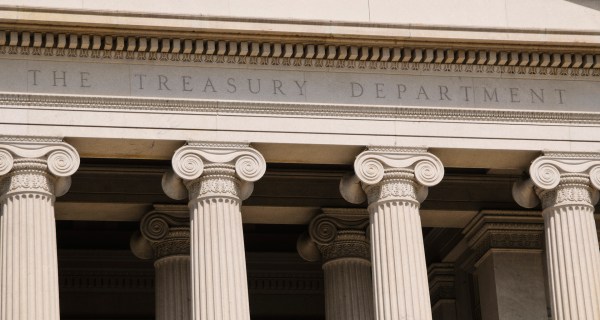Treasury advances blockchain proof of concept for grant payments

The Treasury Department continues to test a blockchain proof of concept tokenizing grant payments to increase transparency and reduce the amount of reporting recipients must do, the program’s lead said Monday.
Through the pilot program, data on the award amount, key dates and recipient is scraped from National Science Foundation-issued grant letters and meshed with payment information inside a blockchain token for real-time, transactional transparency.
The Bureau of the Fiscal Service has spent the last two-and-a-half years working on the proof of concept, which continues a 2017 effort, in light of grant recipients reporting they submit about 400 reports to agencies annually and 350 quarterly.
“This is taking a tremendous amount of their time and resources to just tell us how they spent their money,” said Craig Fischer, program manager at BFS, speaking at the ACT-IAC Imagine Nation conference in Hershey, Penn., on Monday. “Well, we know at least part of the problem that is involved in reporting is that we can’t always see where the money is going.”
BFS pays grant recipients using their banking number, so it knows who was paid. But what happens to the money after is harder to track — increasing the reporting burden on NSF- and Department of Health and Human Services-funded researchers.
By tokenizing federal payments, BFS can not only audit everywhere that token has been but use it to pre-populate reports like the SF-425 Federal Financial Report. One of the more time-consuming reports, SF-425 takes eight employees five hours to collect 15-plus data elements. The token, on the other hand, populates it in seconds.
“The next step is making those tokens turn back into a payment,” Fischer said. “So we’re now looking at creating those [application programming interface]s in the agency financial management systems.”
BFS built its proof of concept off NSF’s Award Cash Management $ervice (ACM$), a grant payment drawdown system, and it hopes to expand to HHS given the volume of grants awarded by that agency, Fischer said.
His agency is already working with the grants quality services management office (QSMO) inside HHS, which is standing up a marketplace of cloud-based systems and services from federal shared service providers like BFS for customer agencies. The Federal Demonstration Partnership is another customer, as is the Department of Commerce in the past, and the National Institute of Standards and Technology is an “important” partner setting standards around blockchain, Fischer said.
BFS’s proof of concept still has challenges to address, like the fact systems it’s trying to connect to don’t all live in cloud solutions that are Federal Risk and Authorization Management Program certified.
While the proof of concept relies on a permission-based version of the Ethereum blockchain — grant recipients requiring BFS’s permission to join the network and download its digital wallet — the agency is still working through all the token’s privacy ramifications, Fischer said.





